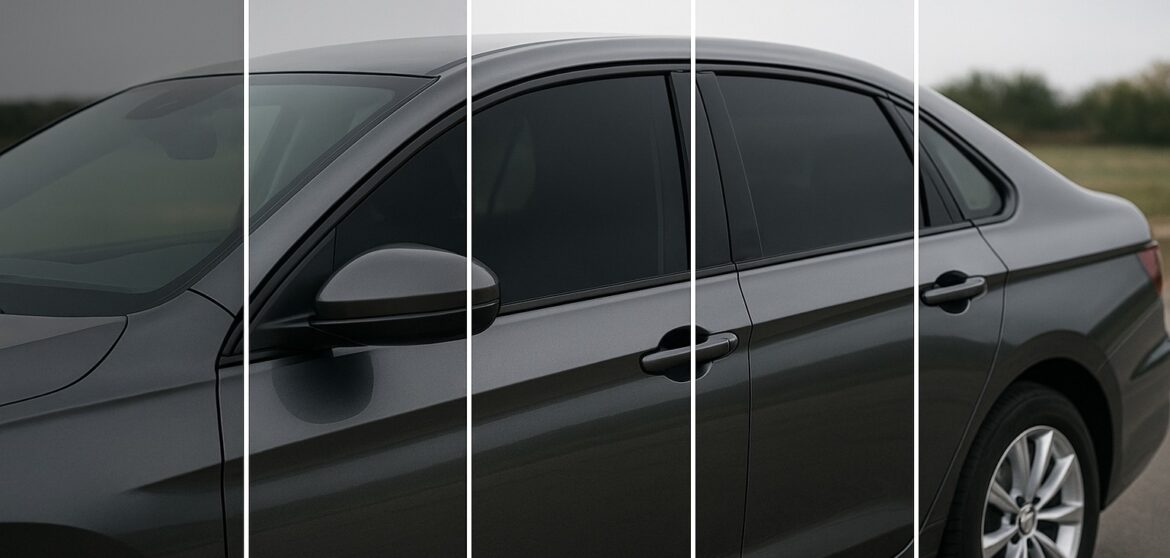Car Window Tinting Laws in the UAE: Legal Limits & Fines
Key Takeaway:
- Legal tint limit: 50% on side and rear windows.
- No tint allowed on front windshield.
- Fine: AED 1,500 or more for violations.
- Medical exemptions available with approval.
- Always use RTA-approved tinting services.
If you live in the UAE, you know how intense the sun can get especially during the summer months when temperatures soar beyond 45°C. Window tinting isn’t just an aesthetic choice here; it’s a necessity. It helps keep the cabin cool, protects the interior from fading, and offers extra privacy.
But while tinting has many benefits, it’s also tightly regulated. Authorities across the Emirates have set clear limits on how dark your car windows can be. Going beyond those limits can lead to hefty fines or even your car being impounded.
So, if you’re thinking of tinting your car or checking whether your current tint is legal, this guide covers everything.
Understanding “Visible Light Transmission” (VLT) and Legal Limits
Before diving into the rules, it helps to understand what Visible Light Transmission (VLT) means.
VLT measures the percentage of light that passes through a window. A higher VLT number means more light gets in (a lighter tint), while a lower number means less light (a darker tint).
In the UAE, the maximum legal tint limit is 50% VLT for side and rear windows. That means your windows can block up to half the light coming in. However, front windshields cannot be tinted, and the front side windows must allow enough light for clear visibility, usually in the 30% to 50% VLT range, depending on the emirate.
These rules are in place for one main reason: safety. Drivers must maintain clear visibility at all times, especially at night, and law enforcement officers need to see inside the vehicle during inspections or emergencies.
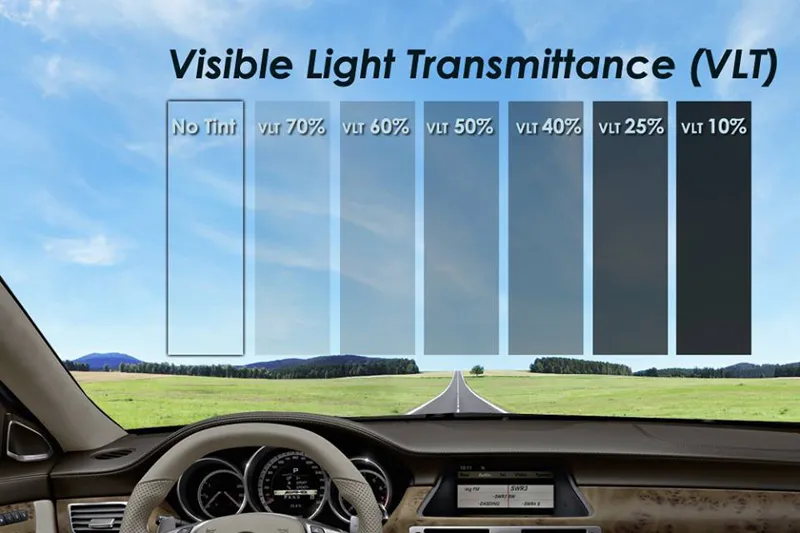
The Rules Across Emirates: Dubai, Abu Dhabi & Others
While the general rule of a 50% tint limit applies nationwide, there are slight variations in how each emirate enforces the law.
- Dubai: The Roads and Transport Authority (RTA) allows up to 50% tint on side and rear windows. The front windshield should remain untinted, and any film installed must not reflect light or reduce visibility for the driver.
- Abu Dhabi: The tinting limit is also 50%, but drivers who exceed this may face a fine of AED 1,500. Special permission from authorities is required if you need darker tinting for medical reasons.
- Sharjah, Ajman, Fujairah, and Ras Al Khaimah: These emirates follow the same federal guideline, with enforcement handled by local police departments.
It’s worth noting that commercial and rental vehicles are usually required to comply with stricter rules, often with no tint or reduced percentages to ensure transparency and passenger safety.
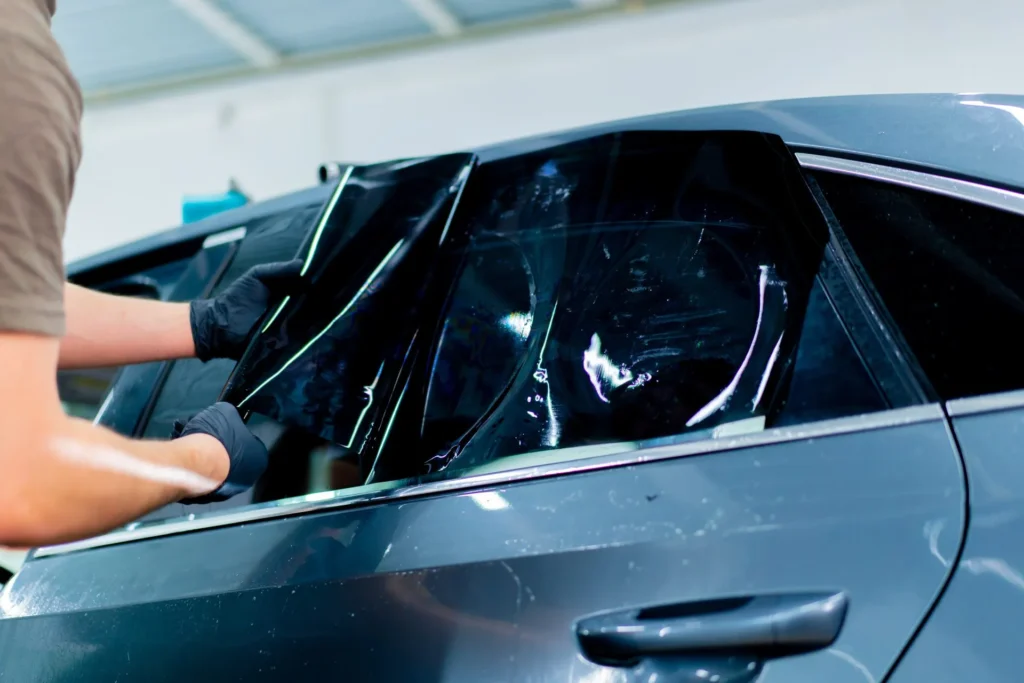
Fines & Penalties for Violating Tinting Laws
Exceeding the legal tint limit might seem harmless, but the penalties in the UAE are quite serious.
According to the Ministry of Interior and various police departments:
- Fine amount: AED 1,500 for illegal tinting.
- Possible impoundment: Your vehicle can be seized until the tint is removed or fines are settled.
- Registration renewal issues: Cars with illegal tint may fail RTA inspection, delaying renewal or transfer of ownership.
In some cases, if your car is impounded, you might have to pay up to AED 10,000 to get it released, depending on the violation and how long it remains in custody.
There’s also a safety angle to consider: in case of accidents, insurance companies may refuse claims if your car was found to have illegal tinting that obstructed visibility.
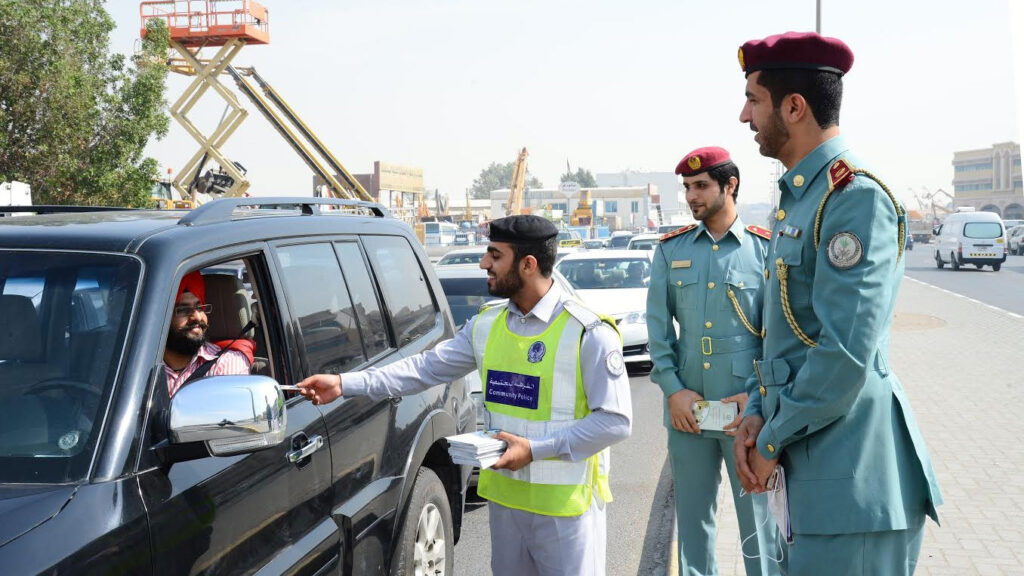
Legitimate Exemptions & How to Apply
While the 50% limit applies to most vehicles, there are some exceptions.
1. Medical Exemptions
If you have a medical condition that requires protection from direct sunlight for instance, skin sensitivity or certain eye conditions, you can apply for an exemption.
To do this, you’ll need to:
- Obtain a medical certificate from a licensed health authority.
- Submit your request to the Ministry of Interior (MOI) or local police department.
- Await approval before installing a tint darker than 50%.
2. Government and VIP Vehicles
Certain government or security vehicles may be exempt for privacy and operational reasons. These permissions are handled directly by authorities and are not available to the general public.
Always keep your approval letter or documentation in the vehicle traffic officers may request it if your tint appears darker than usual.

How to Ensure Your Tinting Service Is Compliant
The best way to stay safe and legal is to get your tint done by a licensed and RTA-approved workshop. Here are a few tips:
- Ask for VLT certification: Reputable installers can provide a certificate showing your film’s light transmission percentage.
- Choose high-quality film: Ceramic or carbon tints reduce heat and UV rays without being overly dark.
- Avoid reflective or metallic finishes: These can interfere with visibility and sometimes breach the reflective tinting rules.
- Check before you tint: Some service centers offer VLT testing to confirm compliance before and after installation.
Keeping your invoice and certification can also help during vehicle inspections or traffic checks.
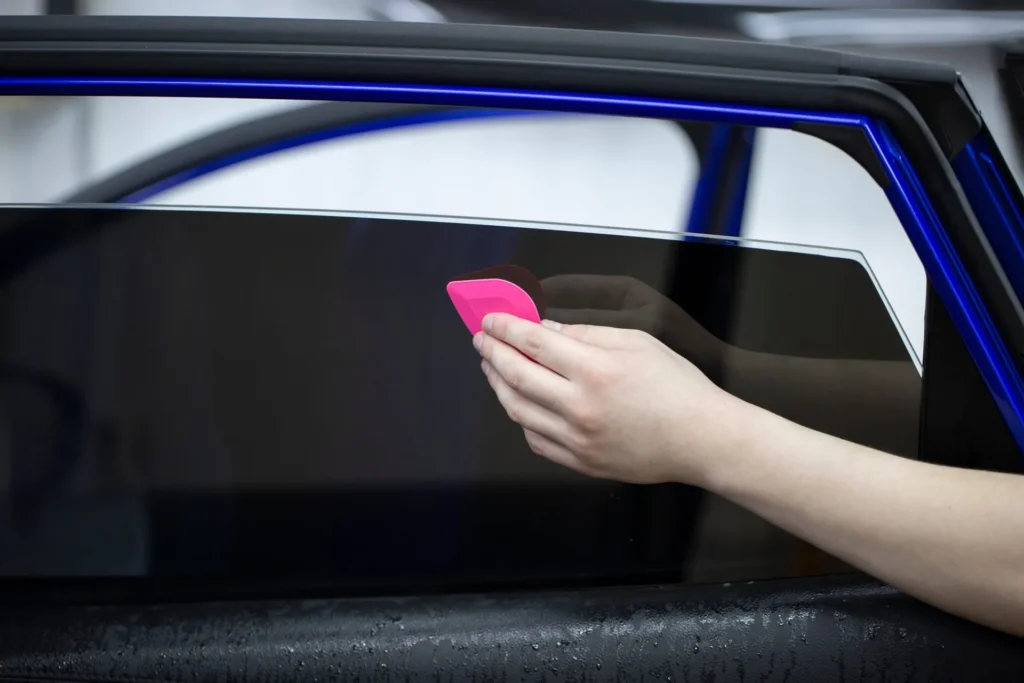
Common Mistakes to Avoid
Even experienced car owners make errors when it comes to tinting. Here are a few pitfalls to watch out for:
- Tinting the front windshield: This is strictly prohibited.
- Installing “limo tint” (very dark): Anything darker than 50% is illegal unless officially approved.
- Using removable or rolling shades: Even temporary sunshades that block the driver’s view are considered violations.
- Ignoring inspections: Failing to adjust your tint before renewal can cause registration delays.
- Tinting rental cars: Always confirm with the rental company; unauthorized tinting may void your agreement and incur fines.
Benefits of Compliant Tinting
When done properly, legal tinting offers several practical and safety advantages:
- Better temperature control: Keeps your car cooler, reducing air-conditioning load.
- UV and glare protection: Shields your skin and eyes from harmful sun exposure.
- Interior preservation: Protects leather seats and dashboards from cracking or fading.
- Enhanced privacy: Prevents prying eyes while maintaining road safety.
- Peace of mind: Avoids fines, penalties, and registration issues.
Complying with UAE tint laws isn’t just about avoiding penalties, it’s also about maintaining safety standards and ensuring your car meets inspection requirements year-round.
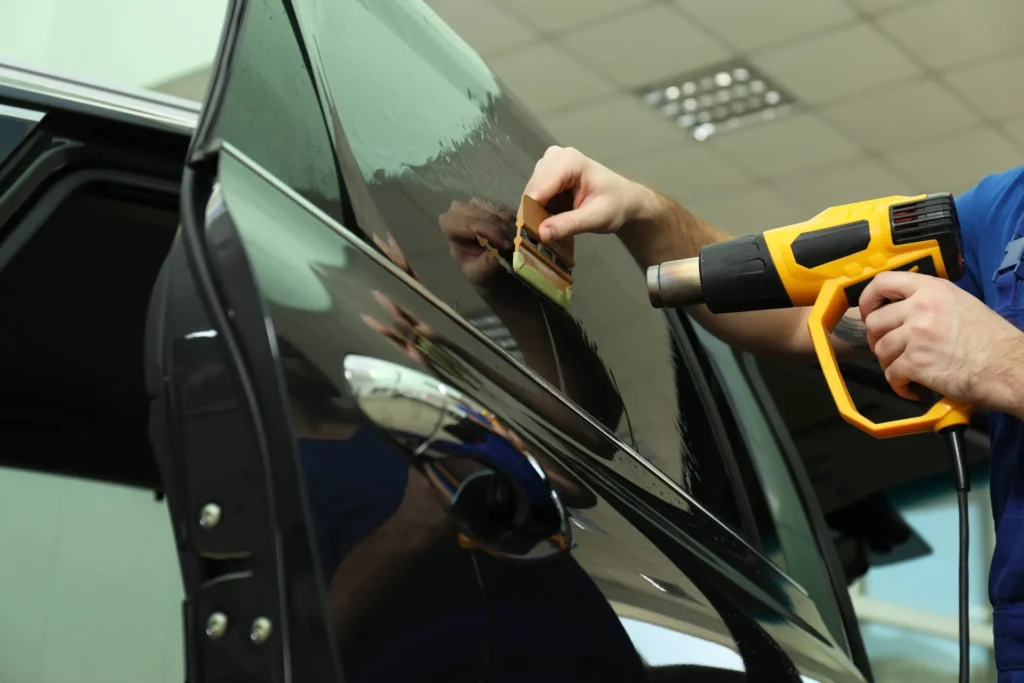
Stay Cool, Stay Legal
In the UAE, window tinting makes perfect sense given the region’s harsh sunlight, but it must always be within the legal limit. The maximum allowed tint is 50% for side and rear windows, while the front windshield must remain clear.
Violating these rules can lead to fines of AED 1,500 or more, and even impoundment of your vehicle. If you need darker tinting for medical reasons, obtain official approval first.
Before tinting, always consult a certified installer, ask for documentation, and make sure the VLT percentage complies with the law.
At the end of the day, compliant tinting keeps you comfortable, safe, and worry-free, so you can enjoy the UAE’s roads with confidence.

